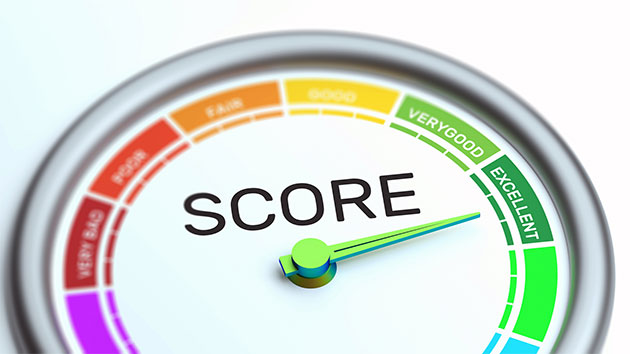
GOCMEN/iStockBy Catherine Thorbecke, ABC News
(NEW YORK) — FICO announced Monday it was launching the pilot version of its new Resilience Index, a tool designed to complement the standard FICO credit score and give lenders an idea of consumers’ resilience during an unexpected economic disruption.
“Lenders and investors need to be able to evaluate and manage portfolios based on rapidly changing conditions, to further safety and soundness in credit as well as support the global economy,” Sally Taylor, the vice president and general manager at FICO Scores, said in a statement announcing the new index.
“Consumers benefit when lenders have the tools to identify resilient borrowers, enabling lenders to price their products more competitively and to responsibly provide greater access to credit than they would otherwise be able to do,” Taylor said.
The measurement “provides an additional layer of insight to help more accurately capture the resilience of a consumer and empower lenders to provide access to credit during difficult economic times,” Taylor added in a blog post Monday explaining the new tool.
The index ranks consumers on a scale from 1 to 99, and “consumers with scores in the 1 to 44 range are viewed as the most prepared and able to weather an economic shift,” Taylor explained.
While lenders often respond to economic uncertainty by raising credit score cut-off qualifications, the FICO Resilience Index can be used as an additional tool for lenders to help identify those who may be more resilient to economic stress. The score was created in part after FICO’s analysis of more than 70 million consumer credit files during the Great Recession, FICO said in a statement.
Tom Parrent of the financial services analytics company Quantilytic argued that the FICO Resilience Index could have originated almost 600,000 additional mortgages from 2010 to 2015 for consumers with FICO scores ranging from 680 to 699 if the FICO Resilience Index was available to lenders at the time.
Higher-resilient consumers tend to have more experience managing credit, fewer active accounts, fewer credit inquiries in the last year as well as lower total revolving balances, according to Taylor.
Teds Rossman, an industry analyst for CreditCards.com, said the index “switches up the normal FICO formula a bit.”
While paying bills on time is usually the No. 1 factor for determining a traditional FICO score, “the Resilience Index focuses more on keeping your credit utilization low, avoiding too many accounts and maintaining a long credit history,” Rossman added.
“These aren’t drastic changes, but they will be used as tiebreakers of sorts. They could tip the scales if you’re on the border of getting approved or not,” he added. “And credit card companies could use the Resilience Index to determine credit line increases and decreases.”
Rossman noted that the additional data from a FICO Resilience Index is especially useful at a time when lenders “are very nervous about risk.”
For consumers, the main step to boosting your FICO Resilience Index — which can also help your regular FICO score — is lowering your credit utilization.
Rossman recommended making “an extra mid-month payment” if you can for your credit cards to lower utilization before the statement is generated, noting that it’s “possible to have a high utilization ratio even if you pay your bills in full.”
Copyright © 2020, ABC Audio. All rights reserved.
